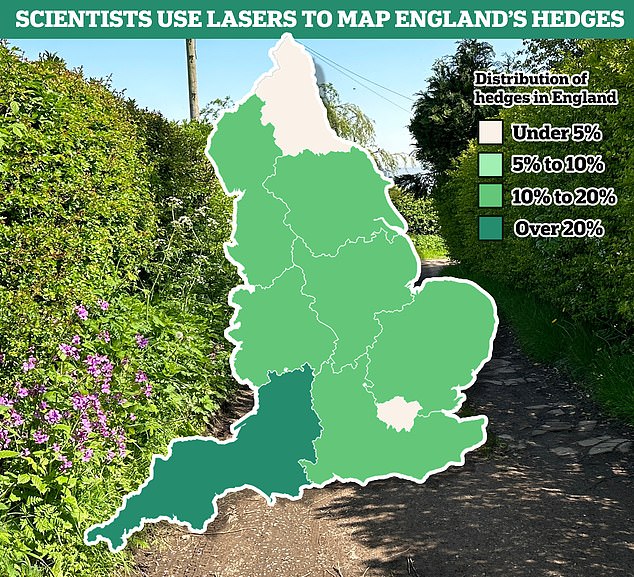They provide a home for birds and insects, keep soils healthy and even help in the fight against climate change.
Now, because of their importance to the English countryside, scientists have created the most comprehensive maps yet of England’s hedgerows.
Scientists used LiDAR, a technology that emits pulses of light to create 3D images, to identify the location of the hedges and measure their heights.
According to the results, there are 242,000 miles (390,000 km) of fully grown hedgerows in England, enough to circle the Earth almost 10 times.
The counties with the most coverage are Cornwall, Somerset and Derbyshire, while those with the least coverage are Surrey, Hampshire and Berkshire.
According to the results, the southwest has the highest density of hedges. Greater London and the North East have the least
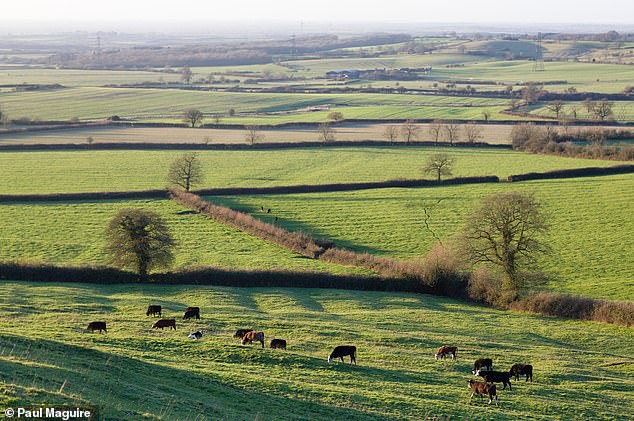
Hedges have been an integral part of our rural landscape since the Bronze Age, traditionally marking boundaries and housing livestock. Pictured, hedgerows in Aylesbury Vale, Buckinghamshire
“Hedgerows are not only an intrinsic part of England’s rural heritage, they can also be a real asset in helping to tackle the climate and biodiversity crisis,” said project leader Dr Richard Broughton, from the Center for UK Ecology and Hydrology.
‘The new map allows us to see where hedgerows are scarce and identify sites for specific planting and restoration efforts, linking habitats and improving the hedgerow network.
“It can also be used to estimate the potential amount of carbon that hedgerows could remove from the atmosphere and store.”
The LIDAR data was collected over five years as part of an England-wide mapping project, led by the Environment Agency.
According to the results, the south west has the highest density of hedgerows, led by Cornwall with an average of 5.1 km (3.1 miles) in a single square kilometre.
Apart from the major urban areas of Greater London and the West Midlands, the lowest densities are found in Surrey (1.2 km/0.7 mi), Hampshire (1.5 km/0.9 mi) and Berkshire (1. 7 km/1 mile).
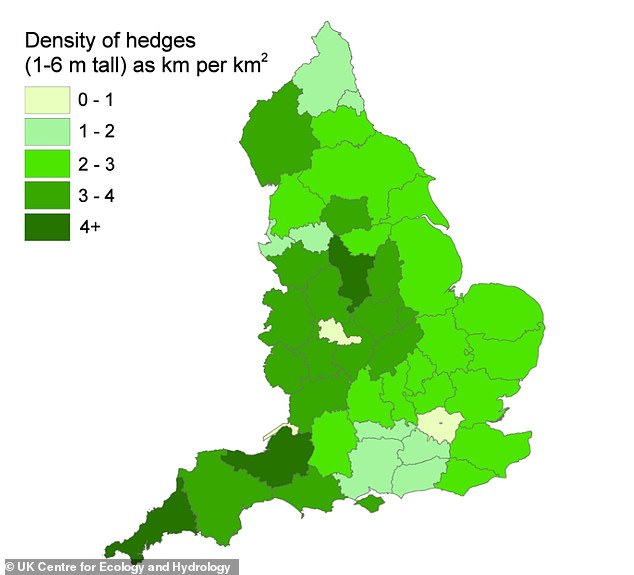
The photo shows the density of hedges (1 to 6 meters high) by county. Cornwall, Somerset and Derbyshire have the most coverage, while those with the least include Surrey, Hampshire and Berkshire.
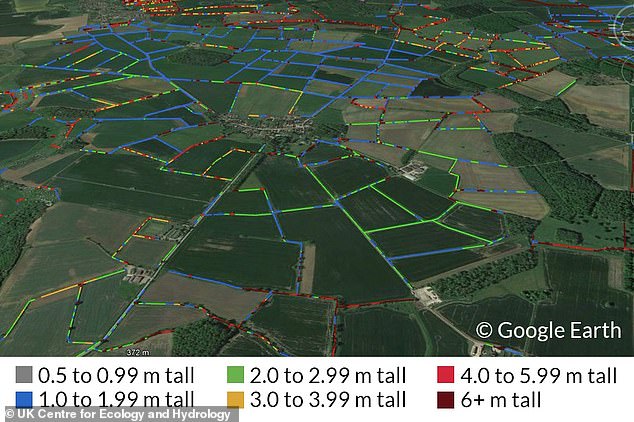
Pictured is the team’s hedge height data overlaid on hedges in the Lincolnshire landscape.
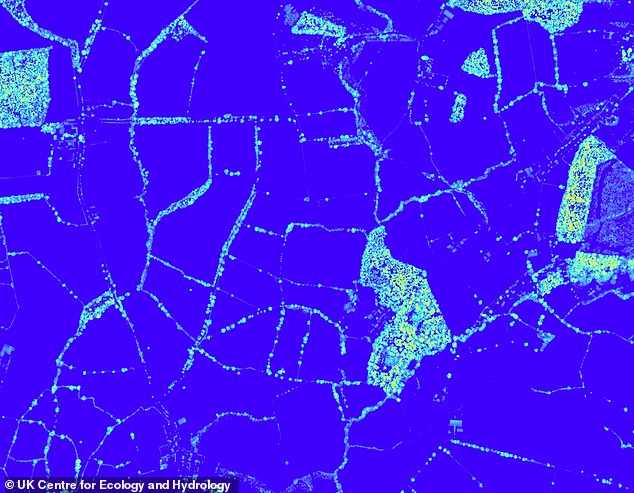
LiDAR (Light Detection and Ranging) uses light in the form of a pulsed laser directed at the ground.
Most hedges in England, whether managed or unmanaged, are between 3.2 and 20 feet (one and six meters) high, depending on the project.
There are 242,000 miles (390,000 km) of such hedges in England, almost 10 times the circumference of the Earth (24,901 miles/40,075 km).
But LiDAR also identified another 41,000 miles (67,000 kilometers) of vegetation lines below 3.2 feet (one meter), which may be degraded, clipped or newly planted hedgerows.
Another 185,000 kilometers (115,000 miles) above six meters (19.6 ft) include mature hedgerows and overgrown hedgerows that have become rows of young trees.
Scientists are calling for greater value for hedgerows, which have been part of the rural landscape since the Bronze Age and traditionally mark boundaries and house livestock.
As well as containing hundreds of plant species, they act as a home for insects, nesting birds and small mammals such as hedgehogs, harvest mice and even foraging bats.
Like other vegetation, they can also capture and store large amounts of carbon, helping in the fight against global warming.
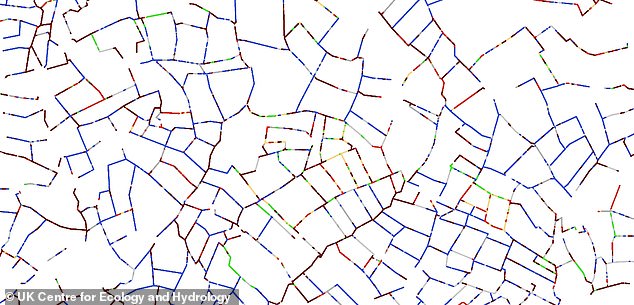
England’s intricate network of hedgerows and the role they play in nature may be underrated
Sadly, around half of Britain’s hedgerows were lost between the 1940s and 1990s, mainly in England, due to overdevelopment and agricultural intensification.
While losses have slowed in recent years, there has been a new threat: lack of maintenance, resulting in gapped coverages.
There may also be a lack of care on the part of councils, resulting in hedges being cut down without much consideration.
Dr Broughton hopes that advances in satellite and drone technologies will improve the quality and availability of hedgerow mapping.


